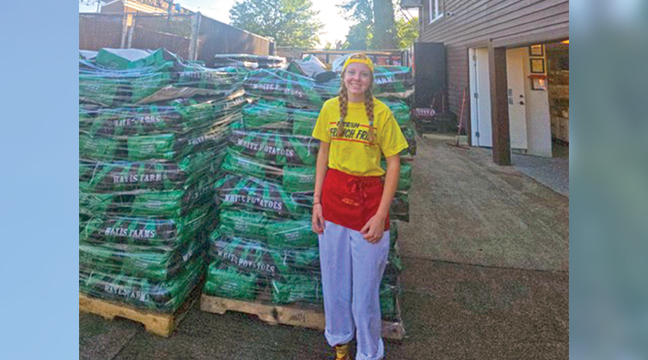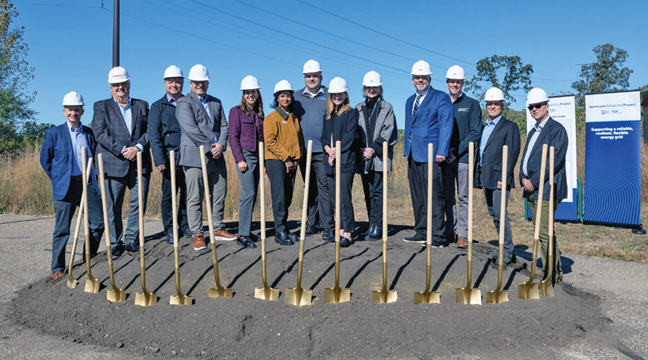While most of us obtain our maple syrup from the shelves of the local grocery store, there is another, much more labor-intensive and much more rewarding path that we can pursue if we have the time, the will and the skill to do so.
The Sherburne History Center Winter Lecture series this week featured Matthew Northrup, a graduate student at St. Cloud State University and a member of the Lake Superior band of Chippewa. His topic was the “Sugarbush”, the complete process for finding, tapping, boiling and creation of genuine maple syrup, as it has been practiced in his family for many generations.
Northrup described the process used in tapping maple trees, which his family does each spring, as many as 200 trees. They have several heavily forested areas in which they practice the arcane art, switching areas each spring to give the tapped trees all the time they need to recover before they are needed again.
Each family has its own methods, Northrup said, and debates rage over whether metal store-bought or hand-carved maple saplings provide the best material for making taps. There appear to be as many types of collection buckets as there are taps, according to his presentation, and various people and groups regard specific areas as superior in the endless bantering that is a part of the syrup-making each year.
What is the same for all is that the collection of maple sap and the boiling and refining of it into syrup and sugar has a pronounced spiritual component for the native American peoples who have grown up in the tradition. The sap itself has an element of the sacredness of the earth about it, Northrup said, and any member of the clan who accidentally spills some is in for a merciless bout of teasing.
That teasing is part of the culture as well, Northrup said, and is an indication that the person being teased is in fact popular with the others in the group. “If we don’t like you, we won’t say anything,” he said, “and you’ll just get the “great stone face” no matter what you do.”
The elders say the crows in the trees will tell the people when it is time to start tapping trees, Northrup said, noting that crows are more silent in the winter months, and only become more vocal when the winter is truly ending. The croaking of frogs is another sign from nature, he said, which means that it is about time to end the tapping season.
Other trees are tapped in the spring as well, with sap from pine trees drawn to make sealants for birch bark canoes, for example. Syrup can be extracted from birch and other trees, he said, but the taste of the syrup does not equal the maple.
Native legend has it that, at one time, maple syrup ran in every tree, and all humans had to do was break off a branch and enjoy the sweetness as it ran out of the wood. The legend goes on to say that the Great Spirit saw that men were becoming too lazy, and required them to work for their syrup as we do today.
Modern syrup
Holes are made today with an electric drill, if possible, Northrup said. If a cordless drill is not practical, the old fashioned hand drill is brought into play, which can result in an exhausting day if all 200 trees are to be drilled and tapped in the same day. Breaking a drill bit off inside a tree is also considered bad form for an experienced tapper. Each tap hole must then be carefully cleaned to remove residue that could block the tap.
Mason jars, plastic milk jugs and metal buckets with tops are used today, and starter kits are available at various hardware outlets, though those are most useful for those tapping a small number of trees. Lids are needed to keep moths and small vermin out of the syrup.
A basswood tree does resemble a maple tree, Northrup said, and more teasing is on tap if a supposedly experienced tapper drills into one by mistake. (Basswood bard has straight lines, maple bark is broken up at the base and smooth towards the top. Basswood has higher branches, also.)
Once collected and transferred to the boiling area, the maple sap is boiled over a wood fire in one or more cast-iron kettles, which removes the water from the sap and can take from eight to 36 hours of continuous boiling. It takes 35 to 40 gallons of sap to create one gallon of syrup.
The long “boil” also provides ample time for socializing with friends and family, which is one of the most enjoyable parts of the process. A Bureau of Indian Affairs report from the mid 19th Century described the Chippewa as being “guilty of excessive visitation,” a practice which they still enjoy today, Northrup said.
The sap may threaten to boil over the kettle unless a piece of salt pork is suspended just above the liquid level, which calms the roiling sap and creates a delicious piece of “boil bacon” which is much prized when the boil is done.
The final boil is done on a stove indoors, Northrup said, and the syrup is poured through cloth to strain out any final impurities.
The cast-iron kettles are wiped but not washed with soap and water, he said, and they are used next for processing wild rice. The kettle retains some of the flavor of the syrup boil, which is passed on to the rice during the process.
Natural wild rice is green in color, not the black variety often seen in stores. The black color is a result of not following the correct procedure for cleaning and curing the rice, Northrup said. An Indian recipe for cooking the “black rice” calls for a stone to be placed in the pot along with the rice. “When the stone is soft,” Northrup said, “the rice is ready.”
The next Winter Lecture Series event will be a presentation on World War I by teacher Renae Elert Weds., March 19 at 2 p.m. at the Sherburne History Center in Becker, MN.









